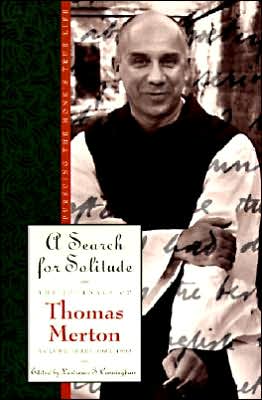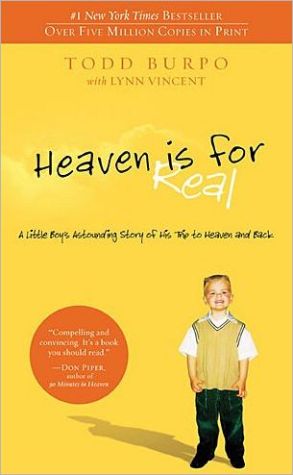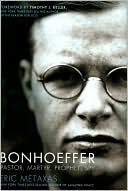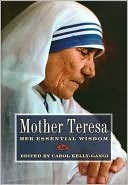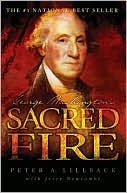Search for Solitude: Pursuing the Monk's True Life: The Journals of Thomas Merton, Volume Three: 1952-1960
The third volume of Thomas Merton's journals chronicles Merton's attempts to reconcile his desire for solitude and contemplation with the demands of his new-found celebrity status within the strictures of conventional monastic life.
Search in google:
The third volume of Thomas Merton's journals chronicles Merton's attempts to reconcile his desire for solitude and contemplation with the demands of his new-found celebrity status within the strictures of conventional monastic life. Kirkus Reviews This volume of journals reveals Merton in his late 40s, already pulled by the tension between spiritual interiority and social activism that was to characterize his final years.By 1960 Merton was an internationally renowned figure. His bestselling Seven-Storey Mountain (1948) had been ranked alongside St. Augustine's Confessions, and in a steady stream of books and articles he had explored monastic spirituality in a way that seemed fresh and relevant to a wide public. The themes in this volume of his journals show a definite shift away from his earlier otherworldliness. Kramer (English/Georgia State Univ.) has divided the manuscript chronologically into four parts. We see Merton at last obtaining the unusual permission from his abbott at Gethsemani to live in a hermitage, yet meeting a growing number of thinkers and representatives of other faiths in his retreat. Even before Vatican II begins, he is involved in the issues of liturgical reform, ecumenism, and especially the Church's attitude to the modern world. The Cuban missile crisis and the apparent inevitability of nuclear war loom large. Merton considers the need for Christians, including himself, to speak out against the Vietnam War and social segregation, while the writings of Hannah Arendt and the Eichmann case force him to think more deeply about the Catholic understanding of obedience. These pages are characterized more by breadth than depth. Although there is much personal questioning, spiritual musing, and notes from Merton's extensive reading and worldwide correspondence, most readers would do better to turn to Conjectures of a Guilty Bystander (1966), which contains the developed fruits of these jottings. Strictly for Merton connoisseurs.
July 25, 1952\ I am trying to get myself adjusted to the fact that, twenty four hours ago, I had just left Columbus, Ohio, in an American Airlines plane, although forty eight hours ago, I was here at Gethsemani, working quietly enough, just as I am doing now. Once again — the problem of always arriving where I already am — the problem that confronts me in my dreams — beats me here. (I am slowly getting rid of the violence of that one day's journey.)\ How did I happen to get away from Gethsemani, gather myself together in the middle of Ohio, then take a running jump at the place and land back here in the evening after every one else had gone to bed? This is extraordinary behaviour for a Trappist.\ Was it last week Reverend Father told me I was to drive up and meet him in Columbus to see some property near Newark, Ohio, that was being offered us for a foundation?\ I said Mass yesterday morning at 2:15 in the back sacristy. Bro. Clement and Bro. Wendeline served me. We drove off together about sunrise. They are bringing back some hay from Ohio, where there has been plenty of rain. Everything is burnt up in Kentucky this year — corn, hay, beans, everything except the tree seedlings we planted in the forest this Spring.\ About a half hour on the other side of Louisville, I suddenly realized this was a marvelous journey. We were going along the Ohio River and I saw that it was wide and serene and blue and I saw the wooded hills sweeping down to the broad water, and soon we came to a great curve in the river and passed a river boat coming down withgreat paddles kicking up the water at her stem. It had already been a happy journey from the beginning (I said the votive Mass for Travellers), but now it became a brilliant one. We crossed the bridge at Cincinnati where the state trooper tried to arrest me for taking a snapshot in 1941, when I first came to Gethsemani on retreat. We sailed up the side of a big hill, a couple of hundred feet above the river, with the city unrolling behind us. There are corners where you come upon churches and monasteries springing up on the hilltops, and over your shoulder you see the weird domed towers of Covington, and you are no longer sure whether you are on the Ohio River or the Danube. Finally, somewhere on the way out of Norwood, we stopped at an intensely dull little soda fountain to get a sandwich and it all seemed inexpressibly beautiful. The man who ran the soda fountain was called Shorty and someone reproved him harshly for his high prices, but we were to discover that his prices were much less high than elsewhere, for now everywhere prices are high.\ Out in the plains of Ohio, with red clover in the fields and corn growing high, we raced along the empty highway under the blue sky full of clouds, and I sang the praises of flat country, which I love, and Brother Clement talked of the off-spring of bulls.\ It seemed, at the moment, that I must be going to make a foundation in Ohio. Why else would Reverend Father get me to go all the way up there unless he intended me to be Superior of the foundation? Afterwards this turned out to be by no means certain.\ At Washington court house, the county fair was just about to open and I realized that I loved the small towns of Ohio. We skirted around the outsides of Columbus, but I saw the city in the distance and was filled with the mysterious awe that still comes over me when I think of the nineteen twenties. That tower, and the other less tall buildings, all haunt the memory of those innocent days when Pop was making money for Grosset & Dunlap and Father played the piano in the movie [house] in France and one of the books that made money for Grosset and Dunlap was a reprint of Sinclair Lewis' Babbit.\ The awe grew on me when I realized that, in heading for Newark, we were also headed for Zanesville, where Pop came from and my mother was born. I was inexpressibly moved by the thought that perhaps I would start a monastery in this land which is mine without my ever having lived in it.\ Of course, we did not get as far as Zanesville, and now that I am home again and have woken up in Kentucky, I am sobered by our own solitude, and the poor land, and the cedars, and the hills I have looked at and lived in for eleven years...\ July 26, 1952\ We arrived in Newark, Ohio, and found the house of our benefactor on 7th street. When I was trying to find the house, a painter, working a few blocks up the street, said the house had not been occupied for years. But we found it occupied by a quiet, dignified little old man with the same kind of stiff collar that Pop used to wear, and an immense collection of Indian arrowheads in his cellar. Here we met Reverend Father and Fr. Francis de Sales who had flown in from Chicago where they had been looking up equipment for a new monastery infirmary.\ We had dinner and went out to the farm at Hebron.\ Driving through Granville on the way to Newark I had hoped the farm would be as beautiful as those around this little college town. It was not and yet it is a beautiful farm. The corn was taller than our Kentucky corn. There was woodland with great old maples and walnut trees, and I was fascinated by a corner of the land where there was a wooded hollow and a spring and an old tumbledowned house and barn, and a...
AcknowledgmentsThe Scribe's IntroductionPt. IThe Novitiate Journal: December 1941-April 19421Pt. IIA Journal-Memoir: Dom Frederic Dunne: October 1946-August 194813Pt. IIIThe Whale and the Ivy: December 1946-July 195229The Daily Schedule at Gethsemani During the 1940s489A Glossary of Monastic Terms490Index493
\ Kirkus ReviewsThis volume of journals reveals Merton in his late 40s, already pulled by the tension between spiritual interiority and social activism that was to characterize his final years.\ By 1960 Merton was an internationally renowned figure. His bestselling Seven-Storey Mountain (1948) had been ranked alongside St. Augustine's Confessions, and in a steady stream of books and articles he had explored monastic spirituality in a way that seemed fresh and relevant to a wide public. The themes in this volume of his journals show a definite shift away from his earlier otherworldliness. Kramer (English/Georgia State Univ.) has divided the manuscript chronologically into four parts. We see Merton at last obtaining the unusual permission from his abbott at Gethsemani to live in a hermitage, yet meeting a growing number of thinkers and representatives of other faiths in his retreat. Even before Vatican II begins, he is involved in the issues of liturgical reform, ecumenism, and especially the Church's attitude to the modern world. The Cuban missile crisis and the apparent inevitability of nuclear war loom large. Merton considers the need for Christians, including himself, to speak out against the Vietnam War and social segregation, while the writings of Hannah Arendt and the Eichmann case force him to think more deeply about the Catholic understanding of obedience. These pages are characterized more by breadth than depth. Although there is much personal questioning, spiritual musing, and notes from Merton's extensive reading and worldwide correspondence, most readers would do better to turn to Conjectures of a Guilty Bystander (1966), which contains the developed fruits of these jottings.\ Strictly for Merton connoisseurs.\ \ \
